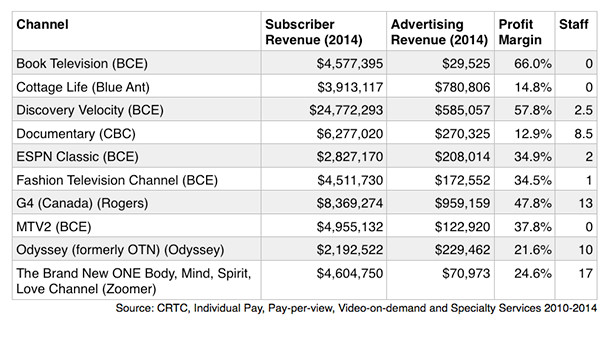Rogers Media's recent decision to slash 110 jobs and end all newscasts at OMNI, its multicultural channel, has sparked outrage among many ethnic communities, who have lamented the cancellation of local news programs in Italian, Punjabi, Cantonese, and Mandarin. Supporters argue that OMNI programming is essential to those communities and worry that the cancellations will mean that viewers become less politically engaged.
Last week, a House of Commons committee held a hearing on the OMNI cuts as members of Parliament from each party took Rogers executives to task. Rogers was unsurprisingly unapologetic, noting that the decision was based on simple economics as it pointed to declining advertising revenues that made the programming unsustainable.
Although MPs offered up a series of suggestions to stave off the cuts, the reality is that the changes at OMNI foreshadow a far bigger upheaval within the Canadian broadcasting world. Indeed, both the government (with its emphasis on pick-and-pay channels) and the Canadian Radio-television and Telecommunications Commission (with its TalkTV decision) have embraced change with the full knowledge that many channels will face elimination under the emerging framework.
Three pressures make perfect storm
Canadian broadcasters face at least three simultaneous pressures, creating a perfect storm that is likely to lead to many more cutbacks and cancellations.
First, channels reliant on highly profitable U.S. programming are finding that the audiences for reruns of previously popular shows are shrinking given their widespread availability from other sources, resulting in a major drop in advertising revenue. Rogers Media executive Keith Pelley told the House of Commons committee that OMNI advertising revenues had declined from $80 million to $22 million over the past four years. Profits from the U.S. shows had been used to subsidize money-losing Canadian programming, but with revenues dropping by tens of millions, that formula looks increasingly shaky.
Second, original Canadian programming may not fare well either. While critics have been vocal about the OMNI changes, Pelley revealed that ratings for the Italian language newscasts were down by 68 per cent over the past year.
With few people watching the programs -- there are plenty of online alternatives -- the audience is no longer there.
Shrinking audiences are likely to cause significant changes at conventional channels that rely solely on advertising revenues that are shifting to other media. But the biggest change within the Canadian broadcasting landscape will be among specialty channels that rely upon the bundling of channels to generate sizeable subscription revenues despite small audiences.

As the accompanying chart illustrates, there is no shortage of channels that have thrived largely on the backs of those bundles to which consumers have been forced to subscribe as part of larger packages. That has yielded strong profits for Canadian broadcasters, but with pick-and-pay options on the way, the inability to generate advertising or audiences may mean those channels come to an end.
For example, BCE's Book Television garnered $4.5 million in subscriber fees in 2014, but only $29,525 in advertising revenue. Its profit margin was 66 per cent and it employed no staff. Book Television may sound like an anomaly, but it isn't. BCE's MTV2 generated $4.9 million in subscriber revenues with only $122,920 in advertising earnings and no staff, while a Zoomer channel garnered $4.6 million in subscriber revenues but only $70,973 in advertising dollars.
Pick-and-pay will not spell the end of all subscription-reliant channels, but with advertising revenues typically linked to viewership, many may no longer be viable. In fact, assuming Canadians opt for pick-and-pay and the trend toward watching Internet video continues, House of Commons hearings on the disappearing channels could become regular programming. ![]()
Read more: Media
















Tyee Commenting Guidelines
Comments that violate guidelines risk being deleted, and violations may result in a temporary or permanent user ban. Maintain the spirit of good conversation to stay in the discussion.
*Please note The Tyee is not a forum for spreading misinformation about COVID-19, denying its existence or minimizing its risk to public health.
Do:
Do not: